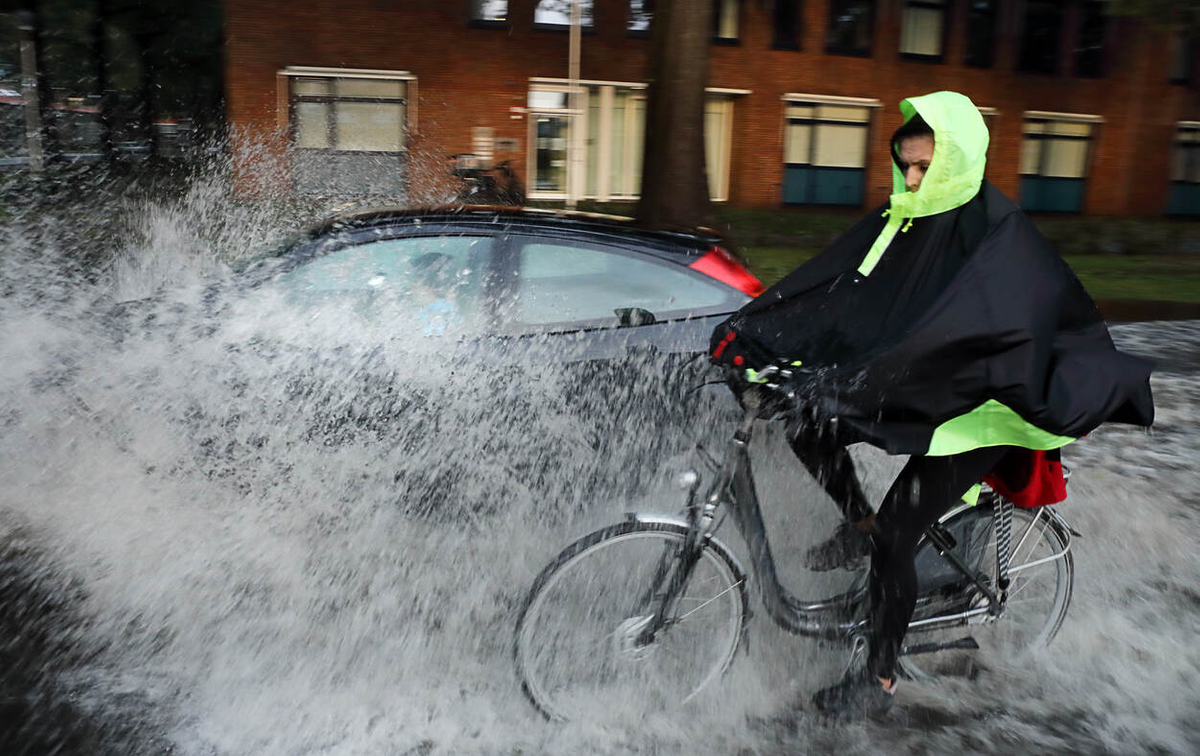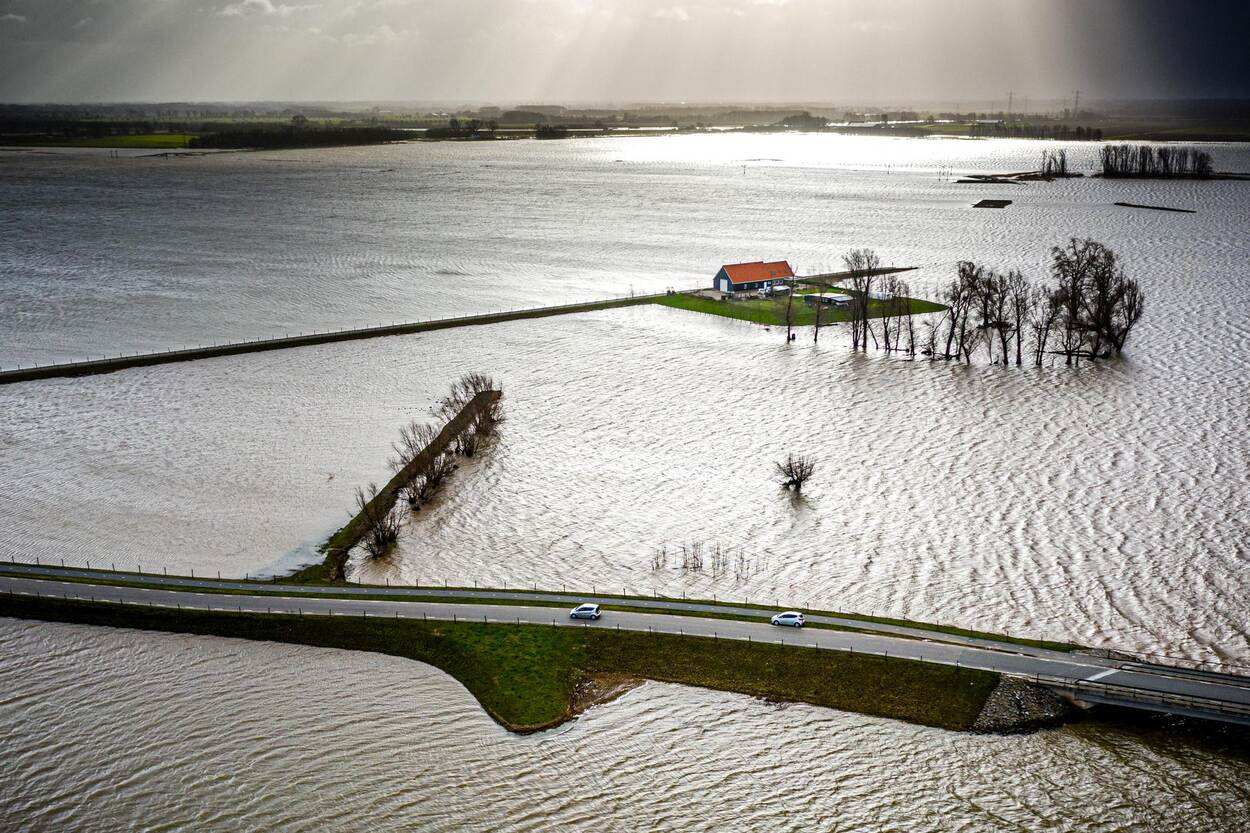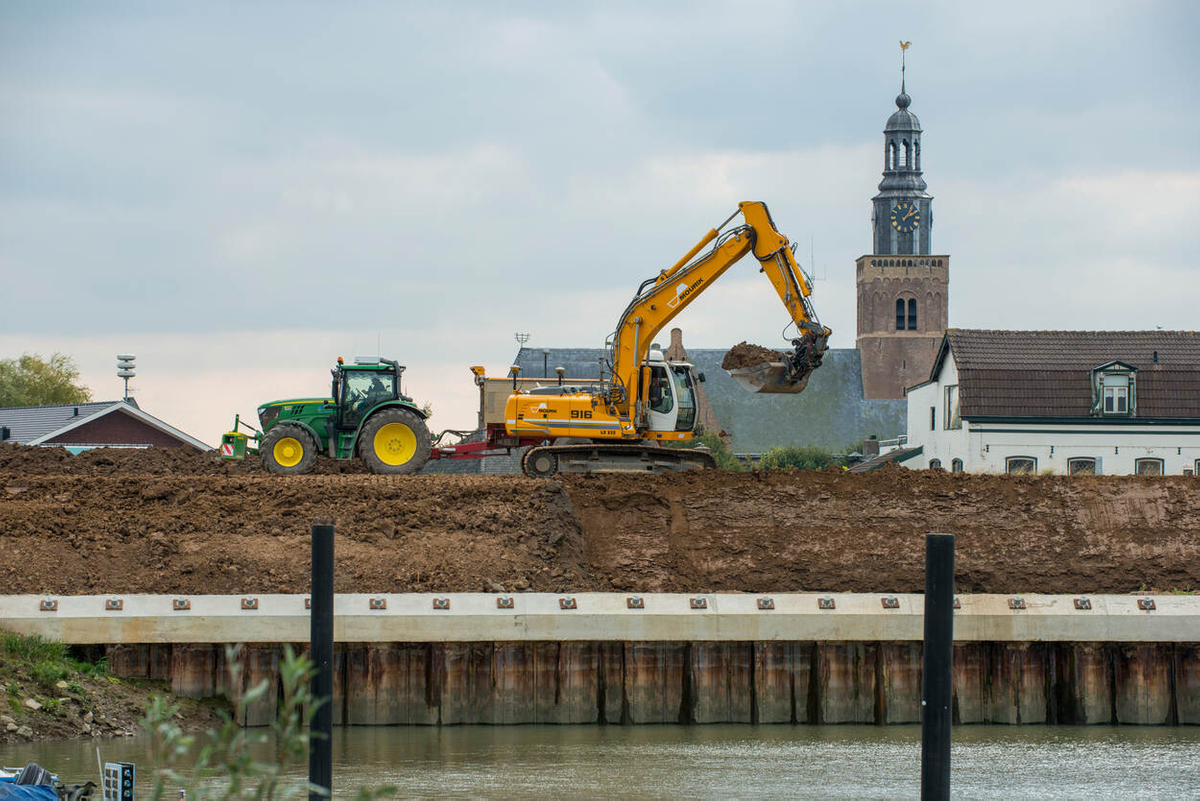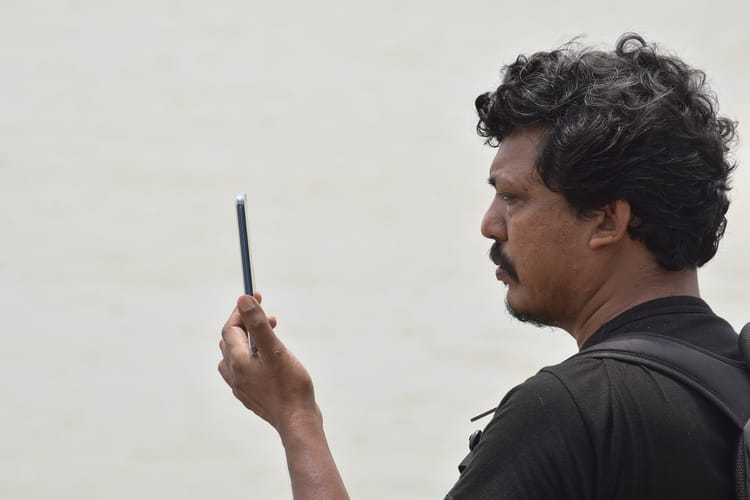“Every development should be climate proof”

Aggravated by climate change, there is a surge in sea level rise, floods, droughts and heat waves, and an increasing pressure on river deltas. This has major consequences on water management in low-lying, deltaic countries such as the Netherlands.
Through a series of interviews, we find out about the current state of water management in the Netherlands. This was prompted by the release of Delta Programme 2022 by Dutch Delta Commissioner Peter Glas last September.
In this interview, Dutch Delta Commissioner Peter Glas talks about making effective use of new opportunities and facing future challenges.

The low-lying Netherlands is safe when it comes to water management, yet it is vulnerable to climate change. The country is well protected against rising water levels, but there is still much work to be done in the years ahead. We face new challenges because of climate change. There will be an increase in droughts and heavy precipitation events, such as the one in July last year when a large part of Limburg was flooded. Should we be worried?
The Netherlands has lived with the threat of water for centuries. Yet we continue to live here, because it is also a very attractive place to live, close to the sea and rivers. Trade and agriculture on fertile soil ensure a prosperous society. But once in a while, we are confronted with the fact that we live in a delta and that nature takes over.
For centuries, we have been protecting ourselves against water. We build infrastructure in the form of dunes, dikes and the Delta Works. This makes the Netherlands the most protected and safest delta in the world, but at the same time we are also vulnerable. Safety and vulnerability go hand in hand but we must continue to invest and adapt to the changes taking place in nature, the landscape and in society. Creative solutions are needed and we are working on them.
So I wouldn't worry too much, because we have it well under control. But is it one hundred percent certain? Never.
One of those creative solutions is Room for the River, an approach to prevent flooding of the major rivers in the Netherlands. This will also improve the spatial quality of the river area. Will this be enough to protect us against the challenges of the future?
The challenges manifest themselves in weather extremes, higher and lower river discharges, and also in an ever faster rising sea level that will also affect the Netherlands. We will continue to invest in the delta to face these challenges. Room for the River is a good example, but we are also raising and strengthening the dikes against high water.
In addition, we pay attention to drought. This is badly needed after three dry summers in a row. And we have to work on the awareness that we might also run short of water – even in the delta – for agriculture, nature, and shipping. So the consequences of drought are also really felt in economic terms.
Our work in response to the flooding in 1993 and 1995, the huge rainfall in 1998, 1999, 2016 and recently in Limburg shows that water needs and has our permanent attention. This is also evident from the fact that every year in the Netherlands we invest EUR 8 billion in everything related to water. This amount is not only for widening rivers and strengthening dikes, but also for sewers, water purification and drinking water supplies.

The population in general is well aware that we will have to deal with more and more flooding and droughts. There is no lack of knowledge, nor, for the time being, of money. What do we ask from the government and what do we do as citizens?
Here in the Netherlands, we have a tradition of collectivity. We organise and arm ourselves against challenges and arrive at solutions together. The water board is a good example of this. Based on this tradition, you have to ask where the collective responsibility begins and commitment of governments ends.
When do we expect efforts from individual citizens in their own homes and from companies? For example, companies can ensure that less water is discharged into the sewers by constructing green roofs and water collection facilities. This kind of investment has short-term benefits, as it saves on cooling and is pleasant for employees and neighbours.
It will also pay off in the long run, because I predict that insurance premiums will go up and at some unexpected moment the whole place will be flooded, bringing production to a halt. I consider it my duty as Delta Commissioner to raise this awareness in the private sector as well.

What are the major tasks and projects being executed or planned for the future?
There are three major tasks. The first is related to water safety, for example the dikes and everything that goes with them such as pumps and pumping stations. Then we look at freshwater availability for industry, agriculture and nature. Finally, we can expect major tasks in the spatial adaptation of the built environment.
Let us start with water safety. Currently, the coastal defences are in order. It meets the standards we laid down in law in 2017. These standards provide for development until 2050. But we must continue to maintain the coastal defences. After 2050, depending on the rise in sea level, we might be in a different situation and this is currently being studied.
In addition to the sea defences, we have inland defences along the rivers, on the IJsselmeer, the Markermeer and in the province of Zeeland – a total of 3,500 kilometres of primary defences. Of the 3,500 kilometres of defence, about 1,500 kilometres will have to be reinforced before the year 2050. This is a major task aimed at dike reinforcement and river widening. On an average, this will cost some EUR 400 million per year.
Then there is freshwater safety. We acknowledge that we may occasionally run short of water. The IJsselmeer as a freshwater buffer plays an important role in this discussion. We have already raised the water level there a little so that we have an extra supply of freshwater, but the question is whether more is necessary. And what does that mean for all those picturesque former Zuiderzee harbour towns, natural banks and landscaping? This is an important task, and it also concerns the question of how we divide the water from the rivers in a prudent manner, retain it as much as possible and not allow it to flow too quickly to the sea.
The third important task is about the finely meshed water system. I am talking about the residential areas, the small rivers and streams in North Brabant, the East of the Netherlands and Limburg. Many buildings are located right next to these babbling brooks, making them vulnerable. In the event of a breach of the streams’ banks, a major problem will arise as we saw in Limburg. In addition to these brooks, the water system in old city centres in the western part of the country is also a challenge.
Managing this intricate network of water system is a major task. There are no legally binding standards or guidelines yet, except the volume of water a sewer must handle. It is not just how you design the public space that matters, but also how you build private homes and other infrastructure so that we are less vulnerable to weather extremes. We are working on that.
I have already called for national standards. Bouwend Nederland (an entity representing construction and infrastructure companies) wants it. They want concrete guidelines, NEN Standards, because then they get a level playing field. If the government makes these rules a part of the tender conditions, the companies will build accordingly. So the call is there and I support it. It's up to the new cabinet, together with all other parties, to really push this forward in the next four years.

What are some concrete examples of measures that have been taken around the built environment to cope with weather extremes?
In the port city Rotterdam, for example, there is a water square, a beautiful public space that has been designed in such a way that when there is heavy rainfall, the water does not immediately flow into the sewers, but can collect on the square.
Another example in Rotterdam is the underground water storage below a car parking garage. In the city centre, there is hardly any room to construct extra canals and it is often not possible to install separate sewers for rainwater and wastewater. This underground water storage offers a solution.
With money from the Delta Fund, we make these kinds of solutions possible. It will not make the whole of the Netherlands resistant to every weather extremity at once, but you have to start somewhere. It does need to pick up speed and I am making sure of that.
How can we continue to adapt to new circumstances?
We must remain alert, keep our knowledge up to date and continue to invest money, in other words, really pull out all the stops for a safe and liveable delta. Then you almost automatically come to the consequences of rising sea levels. One day, the sea along our coast may be two metres higher. The question is how fast that might happen.
With the Sea Level Rise Knowledge Programme we are bringing together all the knowledge on this subject and reducing the uncertainties. For example, we want to know more about developments in Antarctica and their consequences for the Netherlands. But we also look at possible long-term solutions if the current strategies were to be no longer tenable.
We have four development perspectives on the drawing board. The first is based on how we do it now with open river mouths, supplemented by higher dunes, dikes and the Delta Works. The second possibility is to close off the river mouths, which means that you raise fewer dikes and create less room for the river, but you need more pumping capacity to guide high water in the rivers to the sea. There are also ideas for land reclamation and a strategy to create islands off the coast. The last perspective is culturally the most far-reaching and describes the withdrawal from some low-lying parts of the Netherlands. All this knowledge will be included in the six-yearly review of the Delta Programme in 2026.
All in all – the IPCC report, the Sea Level Rise Knowledge Programme, the increasing awareness of vulnerability combined with the will to persevere – we may arrive at far-reaching solutions for the longer term. Of course, in line with the Dutch tradition, we want to stay in control for as long as possible. Even if we change the strategy, we want to do so in a controlled manner.
I do not want to anticipate whether we will have to change the strategy, but that will be a pressing question in the coming years. We must move forward and adapt to new circumstances, but move forward with courage.
What does the Netherlands need to prevent the next flood or drought?
I would like to say: Every development should be climate proof. With every new development, we must ask ourselves whether it can withstand the extremes in order to prevent disruption. And if we do that together with municipalities, water boards, designers and residents, you can prevent a lot of misery and damage.
Every development being climate proof is a necessity. A standard that has to work in all kinds of ways. That means we have to think about the position of the water manager in spatial planning. We need to think about the requirements we can set for infrastructure and real estate in its entirety. It has to become less non-committal and more binding.
In the Netherlands, we may not be very keen on this, but the cost of inaction has to be taken into account, and it is very substantial. If we do nothing about climate change, we will incur EUR 170 billion worth of damage by 2050.
In the province of Limburg, the damage amounts to EUR 1.8 billion. In 2016, rain and hail storms in Eindhoven caused damages worth EUR 600 million. It has been calculated that every euro invested in adaptation pays for itself four or five times over in avoided damage. We must therefore make every development climate proof. We must also embed this in our laws and procedures, and especially in our mindset.






Member discussion